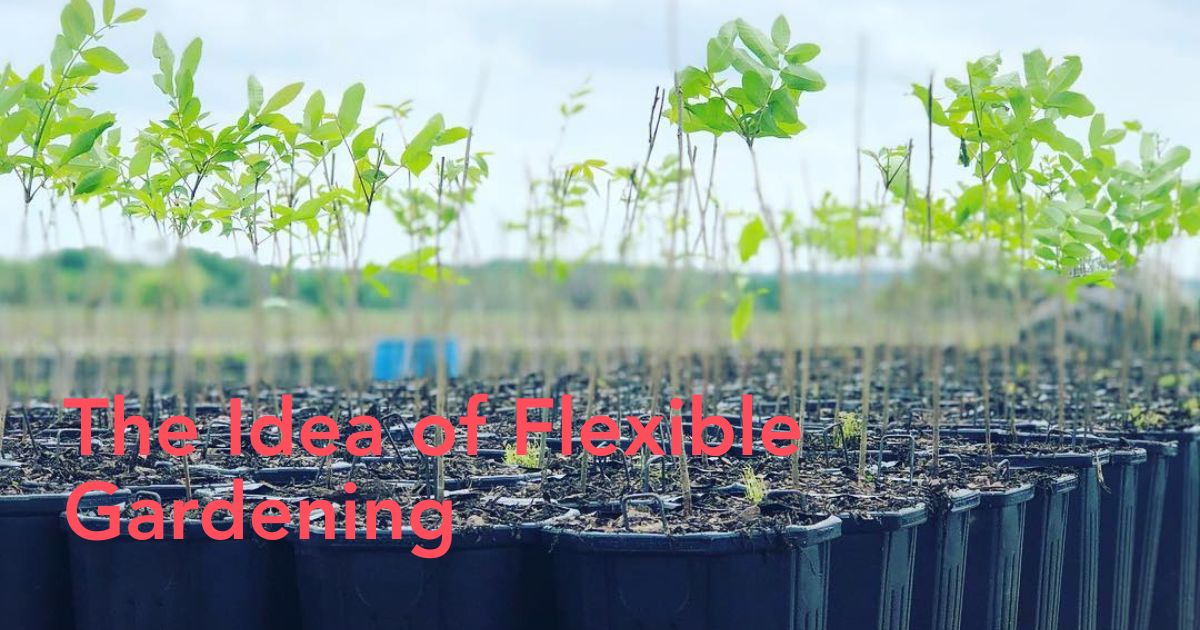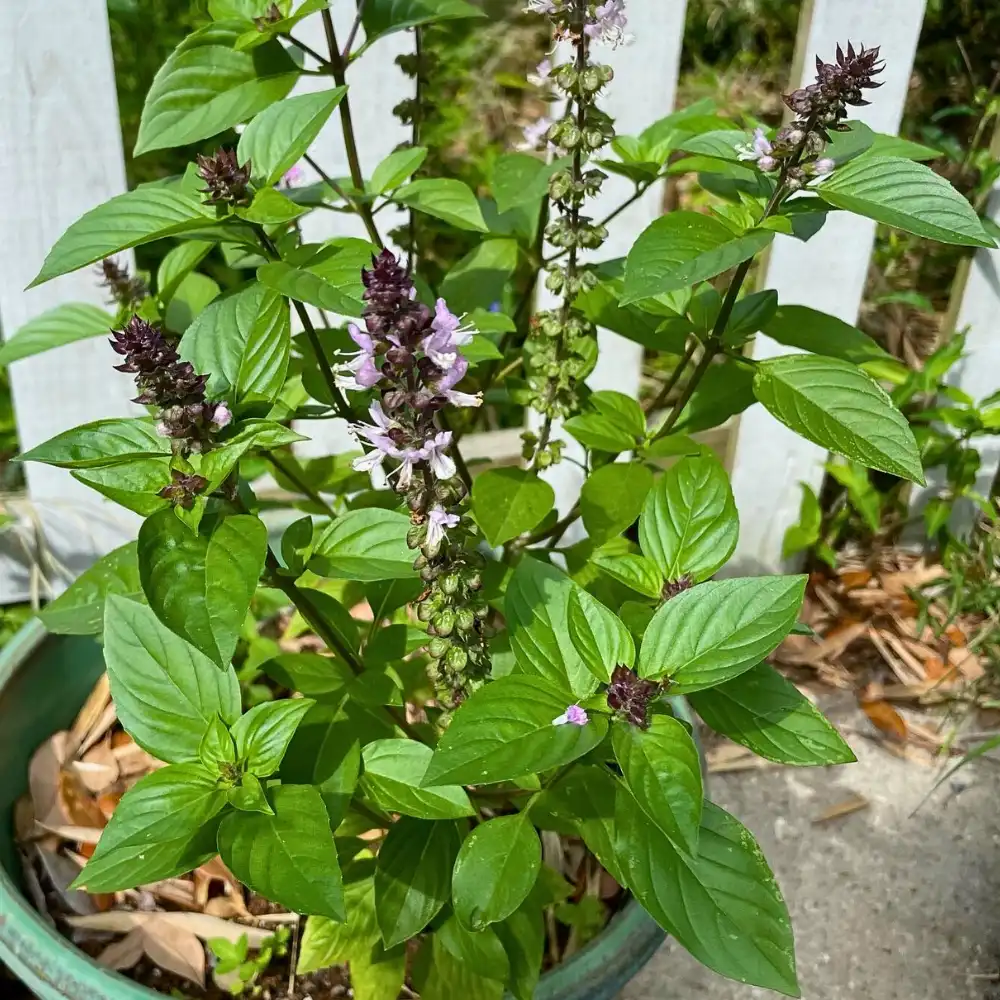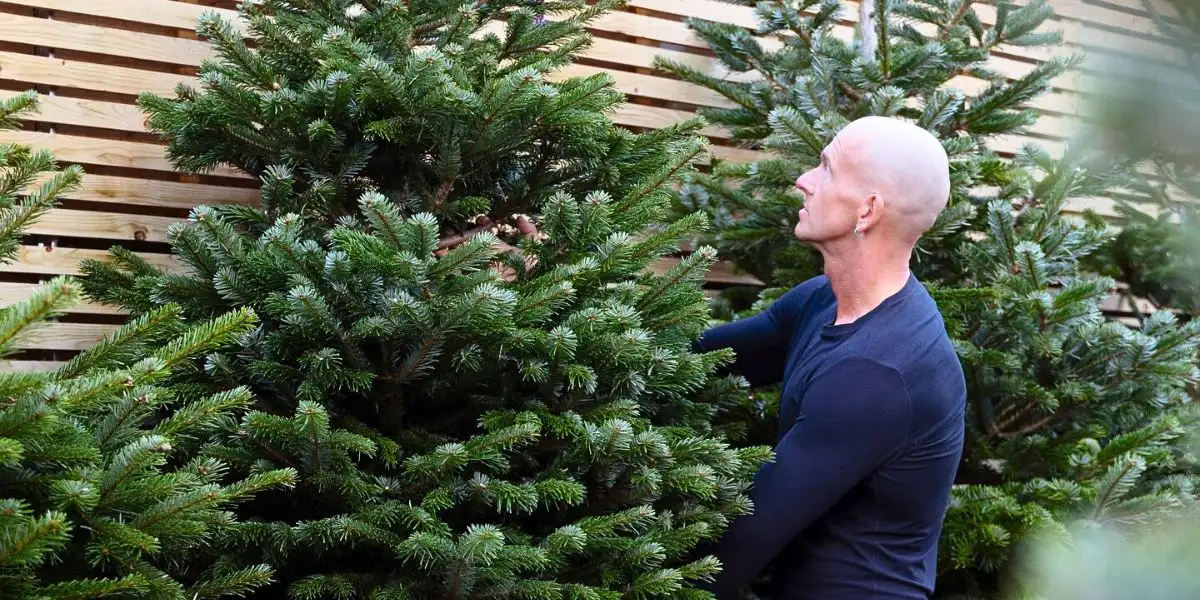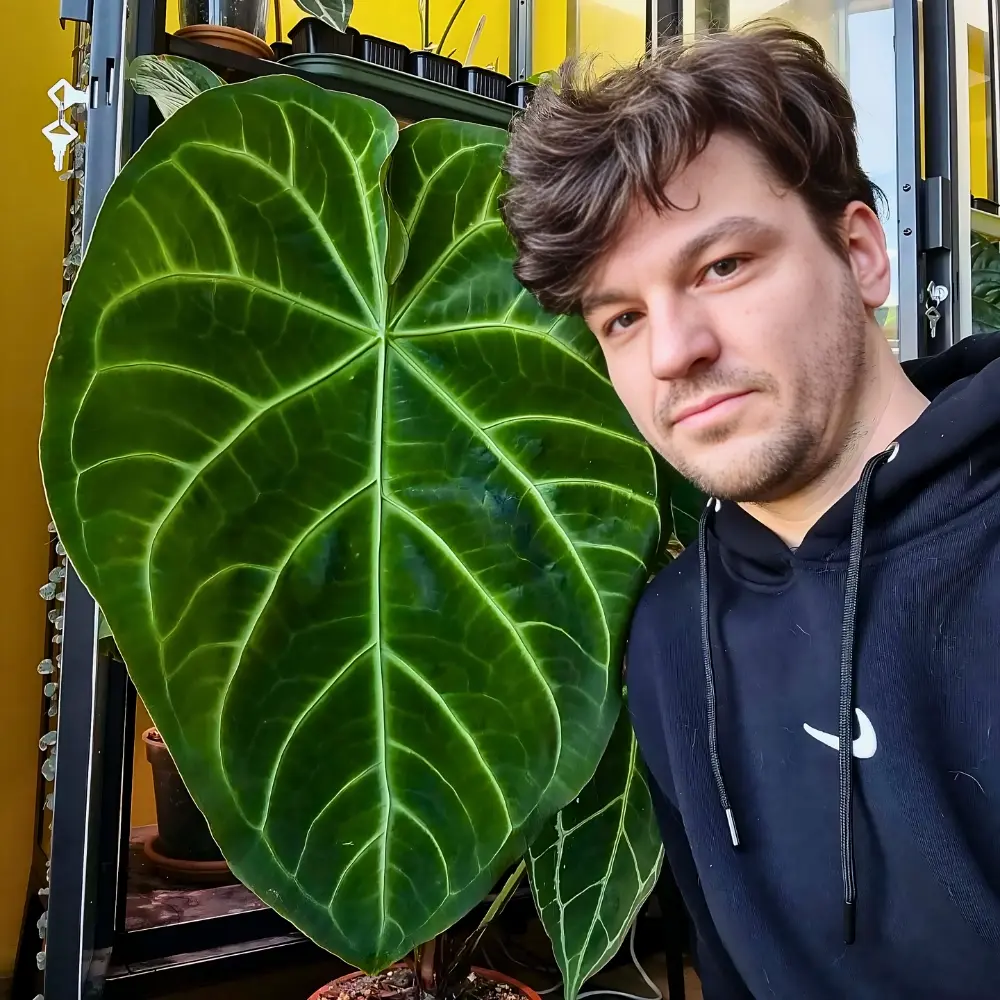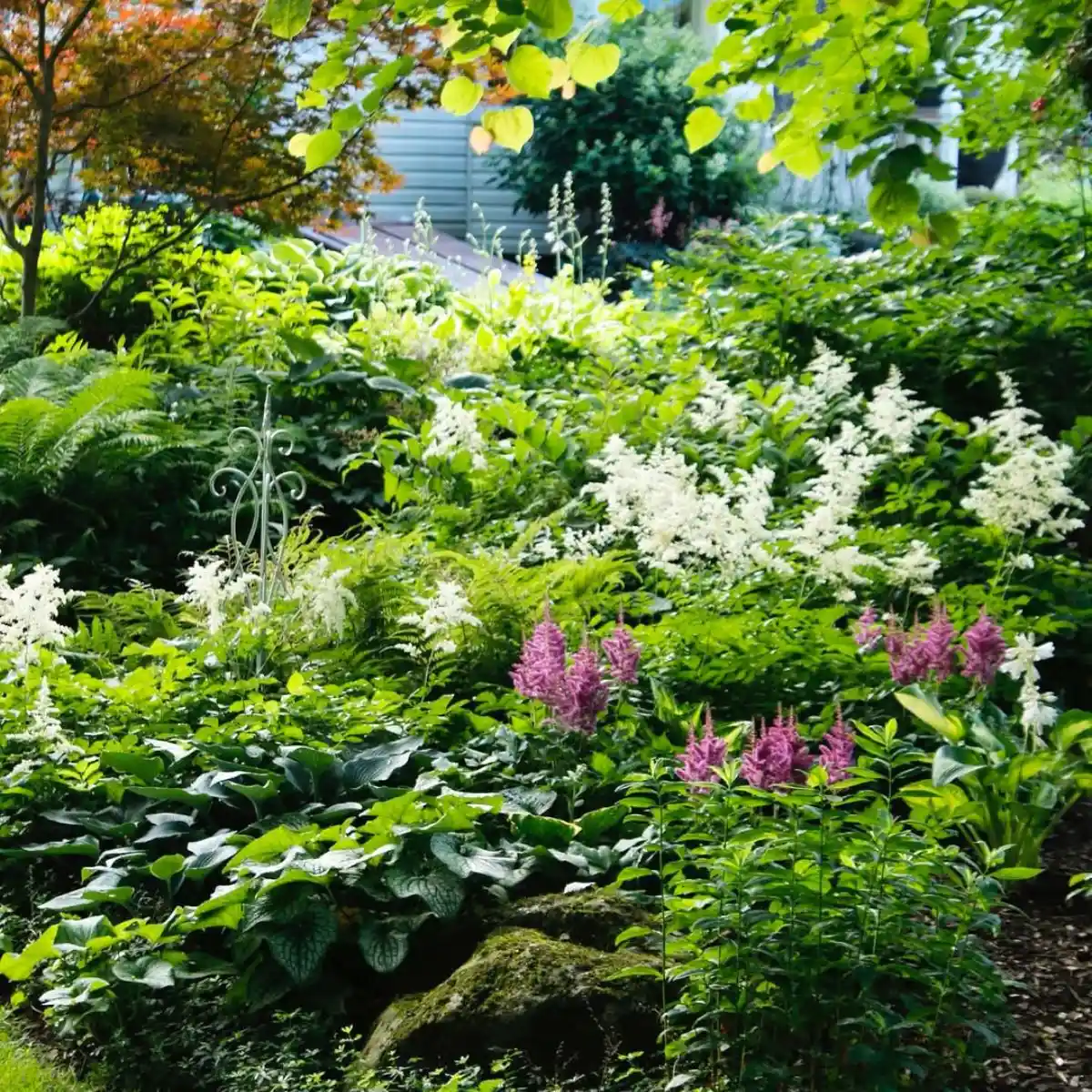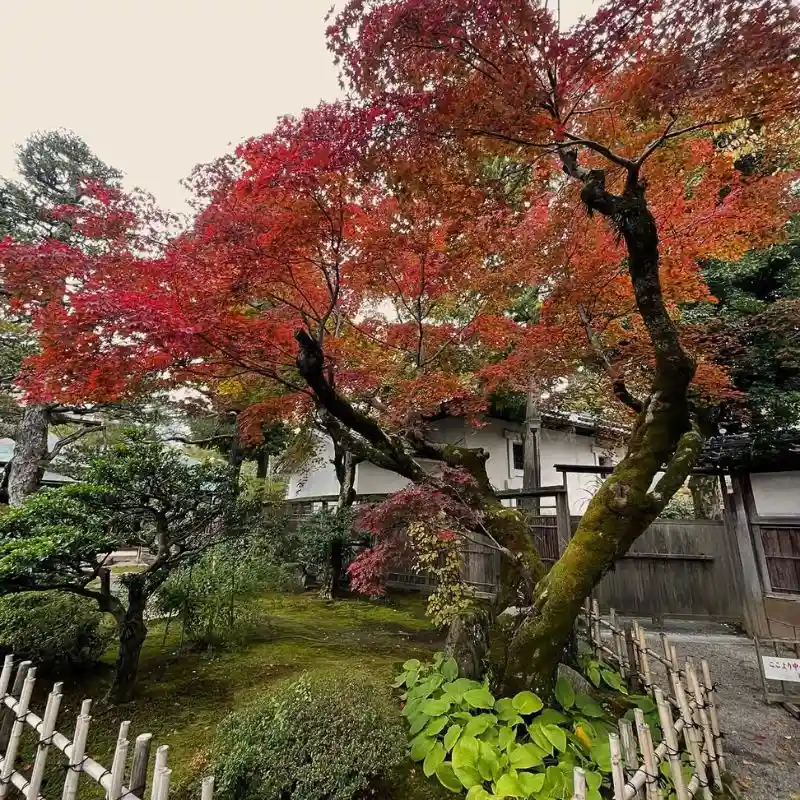Thinking about adding a splash of green to soften your urban space? With the right trees and plants, even the tiniest spaces can flourish. Whether you're short on outdoor space or love the idea of flexible gardening, growing trees in containers is a beautiful and practical solution.
Picture a Japanese maple's Vibrant autumn blaze reflected in a quiet lakeside view or a potted olive tree softening the lines of a minimalist courtyard. Fortunately, these trees thrive in pots, allowing you to enjoy their beauty even in small spaces. These trees in pots not only show aesthetics and design—they evolve with the seasons, adding fresh charm and interest as the seasons shift.
That said, growing trees in pots requires a more thoughtful approach. Raising trees in containers is a delicate balance—it demands insight and intention. In this guide, we'll walk you through everything you need to know about planting trees in pots.

Table of Contents
The Appeal of Container-Grown Trees
Best Trees for Containers
Selecting Pots & Design Considerations
- Pot Size & Depth
- Material Matters
- Drainage is Non-Negotiable
- Aesthetic Harmony
- Stability & Safety
- Mobility & Placement
- Layering & Companion Planting
Your Guide to Potting a Tree the Right Way
Container Tree Maintenance
Final Thoughts: A Balance of Nature and Design
The Appeal of Container-Grown Trees
Planting trees in pots opens up a world of possibilities, especially for those who have a small garden or limited outdoor space. Whether you're dealing with a small city balcony or a rented home or want more design flexibility, potted trees offer the freedom to garden without a permanent commitment. Plus, container trees can soften hardscapes, enhance privacy, and add instant curb appeal.
In today's rapidly growing cities, green urban infrastructure is essential. Container gardening makes a significant contribution to urban ecosystem services, improving air quality, reducing heat, supporting biodiversity, and enhancing mental well-being. Urban forestry studies, including those from the Arbor Day Foundation, further highlight how even container-grown trees help combat the urban heat island effect and enhance air quality in dense city environments.
For businesses, trees in pots instantly boost curb appeal and create welcoming, versatile spaces that enhance the customer experience. They demonstrate a commitment to both sustainability and style while contributing to better air quality and overall comfort. Incorporating container trees isn't just good design—it's a wise investment in a more appealing, functional, and eco-conscious commercial environment.
Best Trees for Containers
Here's a list of trees and shrubs that are generally well-suited for growing in containers, thanks to their manageable size, root structure, and aesthetic appeal:
Small Trees for Containers
- Japanese Maple (Acer palmatum) – Beautiful foliage with seasonal color; prefers partial shade.
- Olive Tree (Olea europaea) – Mediterranean vibe; thrives in full sun and well-drained soil.
- Dwarf Citrus Trees (Lemon, Lime, Calamondin) – Fragrant blooms and edible fruit; needs full sun.
- Bay Laurel (Laurus nobilis) – Aromatic leaves for cooking; slow-growing and container-friendly.
Crape Myrtle (Lagerstroemia indica) – Blooms in summer; available in dwarf varieties.

Shrubs Ideal for Containers
- Boxwood (Buxus spp.) – Classic for topiary or structured hedging; shade-tolerant and evergreen.
- Hydrangea (especially Hydrangea macrophylla) – Bold blooms; needs consistent moisture.
- Camellia – Glossy leaves and lovely winter/spring flowers; thrives in dappled light.
- Lavender (Lavandula spp.) – Drought-tolerant and fragrant; loves sunny spots.
- Dwarf Conifers (like Dwarf Alberta Spruce) – Slow growers with great shape and year-round color.
These plants tend to stay compact, are adaptable to root restriction, and provide year-round visual interest, making them ideal for patios, balconies, entrances, and commercial landscapes.
Selecting Pots & Design Considerations
Growing plants in containers is a versatile and accessible way to bring greenery into almost any space. Containers also make it easier to move plants to optimize growing conditions or protect them from harsh weather. Beyond aesthetics, trees introduce a sense of calm, natural beauty, and a touch of wildness to any landscape.
Nurturing trees in confined spaces requires careful consideration and attention, as container environments differ significantly from natural soil. To help trees thrive, it's essential to understand and address the unique challenges involved. One of the first—and often underestimated—steps is selecting the correct container.
Containers come in various materials, each offering unique benefits that impact both the appearance and health of your potted tree. Concrete pots are sturdy and long-lasting, offering a solid and permanent feel. Plastic containers are lightweight and versatile, making them easy to move and handle. Resin pots blend durability with design flexibility, often mimicking traditional materials while resisting cracks and fading. Classic clay or terracotta pots, cherished for their timeless charm, promote excellent air circulation to the roots but tend to dry out faster, requiring more frequent watering.
Choosing the right pot is a crucial first step in growing trees in containers, as the pot becomes the tree's entire growing environment. Trees depend on their containers for space, moisture, and nutrients. Selecting the right pot involves more than just design—it requires considering size, material, drainage, and shape to meet the tree's specific needs. Thus, selecting the right pot is as important as choosing the right soil, as both create the ideal environment for your tree to thrive.
When selecting pots and designing with trees in containers, it's essential to balance aesthetics with practicality. Here's a breakdown of key considerations to ensure your tree thrives while complementing your outdoor or indoor space:
- Pot Size & Depth
Choose generous dimensions: Trees require ample space for root development. As a general rule, the pot should be at least twice the width of the root ball and deep enough to support stability.
Deep-rooted trees (like olive or citrus) require taller pots, while shallow-rooted trees (like Japanese maple) can adapt to broader, shallower containers.
- Material Matters
Clay and Terracotta: Classic yet heavy, these porous pots promote root aeration, ideal for Mediterranean species like citrus or figs. However, they crack in freezing temps and require frequent watering.
Plastic and Resin: Lightweight and affordable, these mimic natural materials but may degrade under UV exposure. Opt for UV-stabilised variants for longevity.
Fiberglass Reinforced Resin: A premium choice, combining durability with featherlight portability. Brands like Sigma Planters offer frost-proof, fade-resistant designs that come with long-lasting warranties.
Concrete and Metal: Industrial-chic options suit contemporary settings but may retain heat, stressing roots. Line with insulating foam or avoid heat-sensitive species.
- Drainage is Non-Negotiable
Ensure the pot has adequate drainage holes to prevent root rot.
Use a layer of gravel or a piece of mesh over the drainage hole to keep the soil in but allow water to escape.
- Aesthetic Harmony
Select a pot that complements your landscape style, such as modern, rustic, or Mediterranean.
Coordinate color and texture with other hardscaping elements, such as paving, walls, or furniture.
Use matching or symmetrical pairs for a formal entry or staggered groupings for a relaxed, layered look.
- Stability & Safety
Taller trees can become top-heavy, especially in areas with strong winds.
Choose wide, heavy-bottomed pots or anchor the containers discreetly to prevent tipping.
- Mobility & Placement
Consider pots with built-in casters or place them on rolling plant stands if you plan to move them to adjust to sun exposure or seasonal changes.
Place your tree in areas with adequate sunlight for its specific species, and be mindful of wind exposure.
- Layering & Companion Planting
Add low-growing perennials or seasonal annuals around the base of the tree for visual interest and ground cover.
Just ensure companion plants have similar water and light needs.

Your Guide to Potting a Tree the Right Way
Planting a tree in a large container is a smart way to enjoy greenery in limited spaces—such as patios, balconies, or small yards—while still giving the tree ample room to grow. Whether you're working with a decorative planter or a functional garden pot, the steps below will help ensure your tree gets off to a healthy start.
What You'll Need:
A large pot with drainage holes
Lightweight, high-quality potting mix
A tree suited for container life
Slow-release fertilizer
Step-by-Step Instructions:
- Ensure Drainage: Make sure your container has sufficient drainage holes to prevent waterlogging. If needed, add more holes or a layer of gravel or broken pottery at the bottom to keep water flowing and avoid root rot.
- Fill with Potting Mix: Choose a potting mix that is lightweight, well-draining, and rich in organic matter. Look for a blend that contains ingredients like peat moss or coconut coir (for moisture retention), perlite or vermiculite (for aeration), and compost or aged bark (for nutrients and structure). As you fill the container, leave about 2 to 3 inches (5–7.5 cm) of space at the top. This "headspace" is essential—it prevents water from overflowing when you water the tree and ensures that the entire root zone gets properly soaked.
- Plant the Tree: Carefully remove your tree from its nursery pot, making sure the roots are not damaged. Position the tree in the center of the container, making sure the top of the root ball is level with or slightly above the surrounding soil. This helps prevent water from pooling around the trunk, reducing the risk of rot. Most importantly, keep the trunk flare—the base where the trunk widens—visible above the soil. Planting too deeply can suffocate the stem, leading to rot or disease over time. If the tree sits too low, lift it out and add more potting mix until the root ball is at the right height. Then, backfill and secure it in place.
- Backfill and Firm: Once the tree is positioned correctly, begin filling the potting mix evenly around the root ball. This ensures good contact between the roots and the soil, promoting stability and effective moisture absorption. Gently firm the soil as you go, but avoid over compacting, which can restrict root growth and airflow. Leave about 1 inch (2–3 cm) of space below the rim to allow room for watering.
- Fertilize: After planting, evenly sprinkle slow-release fertilizer around the outer edge of the potting mix, avoiding direct placement on the tree's roots to prevent burning. Follow package instructions for the proper amount. The granules will gradually release nutrients with each watering, supporting steady growth without the need for frequent feeding.
- Initial Watering: After planting and fertilizing, water your tree slowly and deeply until water drains from the bottom of the pot. This ensures the soil is evenly moist and the roots are well hydrated. Allow the water to reach the entire root zone at your leisure.
- Monitor & Maintain: After the initial soaking, it's essential to keep a close eye on your container tree's needs. A reliable guideline is to check the moisture by inserting your finger about 1 to 2 inches deep into the potting mix. When this top layer feels dry, it's time to water again. Avoid watering on a fixed schedule—trees in containers can dry out faster or slower, depending on the weather, the size of the pot, and the tree species.
Using the correct potting process provides your tree with a strong foundation. With consistent care, your container-grown tree can thrive for years to come.

Container Tree Maintenance
Unlike trees planted in the ground, container trees rely entirely on you for the right conditions. Here's how to keep them happy and flourishing:
- Watering Wisely
Consistency is key: Container trees tend to dry out faster than those planted in the ground. Water when the top inch of soil feels dry, and adjust frequency based on weather.
Deep, thorough watering is best—ensure water reaches the whole root zone.
Avoid soggy soil: Always check that the drainage holes are clear to prevent root rot.
- Feeding and Fertilizing
Nutrients leach out with frequent watering, so regular feeding is essential.
Use a balanced, slow-release fertilizer in spring and midsummer.
For fruiting or flowering trees, consider formulas tailored to their specific needs.
- Pests and Disease Monitoring
Check leaves and stems regularly for signs of pests, such as aphids, spider mites, or scale.
Keep foliage clean and use organic sprays or insecticidal soap if needed.
Good air circulation and avoiding overwatering can prevent most fungal problems.
Final Thoughts: A Balance of Nature and Design
Trees in pots bring a unique harmony to any space —it's a thoughtful way to bring life, structure, and seasonal beauty into spaces both large and small. With the right combination of species, containers, placement, and care, your trees will not only thrive but also transform the space around them. So whether you're seeking serenity, a standout focal point, or a green companion that grows with you, remember: a tree in a pot isn't just planted, it's placed with intention.

